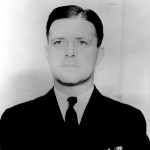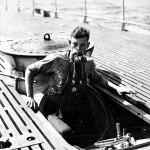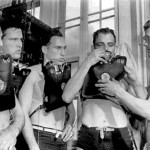SciTech Tuesday: The Momsen Lung
The US Freedom Pavilion: The Boeing Center opened to the public this weekend. A highlight of the pavilion is Final Mission: The USS Tang Experience where visitors engage in the interactive simulation of the ill-fated submarine’s final patrol on October 25, 1944. In total, only nine of the eighty-seven crew members survived, with four thrown from the bridge on impact of the malfunctioning torpedo and another five escaping the sunken submarine using an underwater rebreather called a Momsen lung.
Developed and tested personally by Charles B. Momsen in 1929, the device used the chemical reaction of soda lime to absorb and neutralize exhaled carbon dioxide. Two tubes connect the mouthpiece to an oxygen-filled rubber bag placed over the head and strapped around the waist. By providing a continuous oxygen supply and removing poisonous carbon dioxide, the lung allowed submariners to rise slowly to the surface, avoiding decompression sickness or “the bends.”
Soda lime in its granular form is used in closed breathing environments including general anesthesia, scuba equipment, and space suits. Consisting of hydroxides of calcium, sodium, and potassium, soda lime reacts with carbon dioxide producing calcium carbonate, water, and heat through a series of reactions in which sodium hydroxide acts as a catalyst. While no longer used by the U.S. Navy as the standard submarine escape device, the Momsen lung played a critical role in the survival of sailors from the USS Tang.
- Lieutenant Commander Charles B. Momsen, USN. September 1934. Photo, U.S. Naval Historical Center.
- Crewman A.L. Rosenkotter wearing the Momsen Lung during training. July 1930. Photo, U.S. Naval Historical Center.
- Demonstration of the Momsen Lung. Photo, U.S. Naval Historical Center.
Post by Annie Tête, STEM Education Coordinator
Join us for The National WWII Museum Robotics Challenge!
- Posted :
- Post Category :
- Tags :
- Follow responses to this entry through the RSS 2.0 feed. You can skip to the end and leave a response. Pinging is currently not allowed.







Leave a Reply